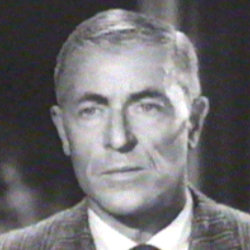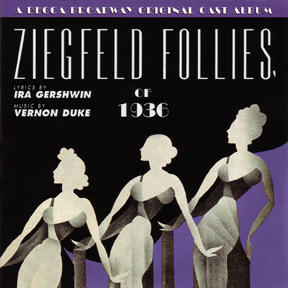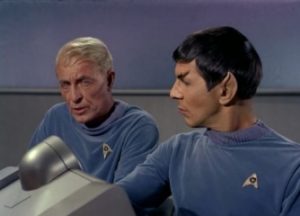 “…an excellent piece on John Hoyt.” ~ Paul Grondahl, award-winning journalist and author of Mayor Corning: Albany Icon, Albany Enigma
“…an excellent piece on John Hoyt.” ~ Paul Grondahl, award-winning journalist and author of Mayor Corning: Albany Icon, Albany Enigma
Mostly, we love to hate John Hoyt.
His pinched, patrician appearance wasn’t particularly endearing and those “mean man” roles he often played weren’t either. Yet, I think most everyone loves him.
A few years after John Hoyt died, I managed to find his wife Dorothy and asked her what he was really like – and here is where a rather baffling development in the John Hoyt story began for me. She gushed with love for him. “He was a presence,” she said in a letter to me. “Whenever he entered, people recognized a special quality of distinction, culture and an engaging manner.” She went on in the letter, “John had all the ability to ride easy on the surface of life. He didn’t have to labor over anything. A movie script was presented and memorized immediately. He did not have to strive.”
So, I guess there were at least 75 times he didn’t have to labor over memorization because that’s the number of films Hoyt made. And you could put the titles of every TV series from the ’50s thru the ’70s into a hat then pull out just about any one at random and John Hoyt probably appeared on it.
Innocently, as a follow-up to Mrs. Hoyt’s letter, I called her. She was 88 years old then and bubbling with a brightness that nearly shone through the phone. So she surprised me when she told me something which she asked me to keep “off-the-record.” With the feeling that I had just visited a quarantined house, I agreed. I kept what I thought was a confidence for 17 years, first publishing it here in 2011.
But the framework of the world had changed enough since that day I spoke to Dorothy Hoyt that I hoped she wouldn’t mind if I told, so many years later, what she had said then. Effervescent throughout our conversation, Dorothy told me that her husband was gay. “Oh yes,” she said, fully aware that “gay” didn’t mean just cheerful. “John was gay.”
Sexuality is a big puzzle piece in a person’s life. After his wife said that, I thought back over his work. I realized that it made me appreciate him even more, now believing that this was part of the color-wheel of humanness that he brought to his craft. I even went so far as to ask readers to tell me if they thought I did the right thing outing John Hoyt in this way. One response that I got cured any worries about betrayal I may have suffered. It left me assured that the world will always be whacky and that questions of morality will never be easy.
The reader cured my moral malady by leading me to a book. It turns out that award-winning journalist Paul Grondahl referred – at length – to John Hoyt’s homosexuality in his biography of Erastus Corning, Mayor Corning: Albany Icon, Albany Enigma. Mr. Gorndahl interviewed Dorothy Hoyt the same year I did, 1996, and his book was published one year later (re-released in 2007). “No, Dorothy never told me to keep the fact that her husband was gay off the record. She spoke of it matter of factly and indicated they had an agreement and an open marriage and that he was quite open with his young lovers, so that’s what I put in my book.” That is what Paul Grondahl told me when I asked. So there was no secret afterall and I had wrestled with myself only because of the flash of an impulse from an aging free-spirit.
* * * * * * * *
It’s not much of a surprise that an appealing, accomplished man born in 1905 should have been married twice to women, have one biological child, and yet be gay. It did, however, cast a clearer light for me onto a story from John’s adolescence that came from an anonymous unpublished biography. When John was 12 years old, his Boy Scout troop was awarded the honor of meeting mega-famed tenor Enrico Caruso. (I pictured them lined up in their summer Scout togs to be introduced to the great man.) When John’s turn came, Caruso clutched the youth’s hand with vigor and exclaimed, “For a boy such legs! Mama mia!” The story goes on that young Hoyt was so stimulated by the encounter that that night he had his mother re-hem his Scout shorts two inches higher.
 Well, the public may not have noticed those supposedly extraordinary legs, which Caruso admired so openly, except under the occasional classic Greek or Roman garb – like those he wore in the role of a bewildered Roman military leader in Spartacus. Recalling his supporting role in Elizabeth Taylor’s Cleopatra when Mrs. Hoyt accompanied John to Rome for the notoriously marathon filming, “You know what a mess that was,” Dorothy said. “But we had a great time. The time of our lives!”
Well, the public may not have noticed those supposedly extraordinary legs, which Caruso admired so openly, except under the occasional classic Greek or Roman garb – like those he wore in the role of a bewildered Roman military leader in Spartacus. Recalling his supporting role in Elizabeth Taylor’s Cleopatra when Mrs. Hoyt accompanied John to Rome for the notoriously marathon filming, “You know what a mess that was,” Dorothy said. “But we had a great time. The time of our lives!”
Mr. Hoyt was born John Hoysradt in New York’s imposing suburban county of Westchester, October 5, 1905. He was the son of a banker father who wanted John to follow him in the same profession. His mother, however, countered that wish by promoting the child’s talent for classical piano and his two sisters worked tirelessly with him, nurturing his vocal techniques. John once wrote that he impishly defied the stuffier side of his family by flaunting his talents at home and performing acts of mimicry, “taking off my aunts and uncles and making them hate me.” Later in life, in the late 1930’s, he used those same talents often to dash off from the theatre after a performance to stellar night spots like the Rainbow Room atop Rockefeller Center and the Persian Room in the Plaza Hotel to do a stand-up comedy routine! Yes, John Hoyt – the brittle, burnt-out inner city high school teacher from Blackboard Jungle; the scheming Martin Peyton from TV’s Return to Peyton Place; the callous, wheelchair-bound egoist millionaire from When Worlds Collide – got rave reviews as a mimic and stand-up comedian!
All that piano training from John’s mom turned out to be as valuable a resource as his comedic sense. A while after enjoying the presidency of the Dramatic Association at Yale and graduating there with a bachelor’s then a Master of Arts degree, he entered the acting company of the renowned Katherine Cornell in 1932. Cornell was to portray a concert pianist in the play Alien Corn and John was, by now, so adroit at the instrument that he became her “ghost” pianist offstage while she mimed the action at the piano before the audience. He impressed her.
When Cornell toured 3 plays in repertory the next year, John was invited to play roles in all three. The tour would be a long, arduous trek by train and, as it turned out, John’s roommate on the theatrical odyssey was another newcomer named Orson Welles. The pair shared sleeplessly noisy upper and lower berths, enduring a sandstorm in Texas and a rainstorm so fierce on the way to Seattle on Christmas Eve that the train had to inch its way over a partially washed-out bridge. Inside, the unnerved cast and crew held quivering drinks in hand and waited to toast safe passage and the end which had come to prohibition a few days earlier.
He joined the Ziegfeld Follies of 1936 with Bob Hope, Josephine Baker (a personal hero of mine) and funny lady Fanny Brice. Because of his earlier  association with Orson Welles, Hoyt became a member of Welles’ then startling and now legendary Mercury Theatre in 1937. It was during this time that he married his first wife, Marian Burns, whom the New York Post described as a “former athletics teacher,” and became the father of his only biological child, a son named David.
association with Orson Welles, Hoyt became a member of Welles’ then startling and now legendary Mercury Theatre in 1937. It was during this time that he married his first wife, Marian Burns, whom the New York Post described as a “former athletics teacher,” and became the father of his only biological child, a son named David.
It was not until the age of 40 that he became “Hoyt,” moving the family to Hollywood. Paramount Studios performed the name change and quickly fastened onto Hoyt’s panache with dialects and languages (he spoke five).
During this time when audiences were enjoying being irritated by all those Nazis, indignant fathers and forbidding megalomaniacs that Hoyt portrayed, in his real life, he was tending to his sick wife Marian who, it was known, would probably never recover from medical problems aggravated by alcoholism. (I happened to catch a glimpse of this more compassionate persona in a John Hoyt performance the other night in “The Case of the Prodigal Parent” episode of Perry Mason on MeTV. You’ve got to love him, too, as a psychiatrist gently talking Barbara Stanwyck out of jumping from a window ledge in The Lady Gambles (1949.)
As expected, Marian did not survive and John, soon after, married Dorothy Haverman who had been a close family friend with one son. They were married for his last 25 years. Dorothy talked of how important his one-man touring production of The Gospel According to St. Mark was to him and how the tour de force, “opened a door,” in his spiritual life.

I never saw Gimme a Break but many may remember Hoyt as a regular on that sitcom as Grandpa Kanisky. (I have to say that Dorothy Hoyt’s description, in Paul Grondahl’s book, of John’s erotic arrangements during the Gimme a Break period leaves me a little shaken. She documents that he did like his lovers questionably young and, apparently, in clusters.)
Trekkies surely know that Hoyt was the wise chief medical officer in the pilot episode of Star Trek.
In 1956, John played The Shaman in the unintentionally silly movie The Conqueror with stars John Wayne, Susan Hayward and actress Agnes Morehead. There has always been a strong suspicion that the deaths of Wayne, Hayward, Morehead and Dick Powell, who directed, as well as the eventual deaths of an alarming number of other cast and crew were linked to that filming. They died of cancer; the location shooting was done in Utah near an atomic test site in neighboring Nevada. John Hoyt died of cancer in 1991.
But he lived his life with stamina. At the age of 76, John moved with his wife to Santa Cruz to be near their family, obliging him to commute nearly 350 miles to Hollywood to carry on his television work.
Marc Scott Zicree, who did not often comment on individual actors’ crafts in his guide The Twilight Zone Companion must have a special appreciation of Mr. Hoyt. “Hoyt is one of that small band of character actors,” he wrote, “who infuse individuality into every role they play, never letting a character become invisible or anonymous.” True. And a good thing too – especially considering that Hoyt kept popping up on the series Hogan’s Heroes as various stereotyped Germans: I counted 3 assorted generals, 2 different field marshals and a colonel.
The distinctly individual actor was survived by 10 grandchildren after his prolific artistic life. ~FW
Take Notice: There is a younger actor with the name “John Hoyt” who has an appreciable body of work in film; yet, this sort of feels like a “cut and paste” overwrite of the original.
<- Return to search